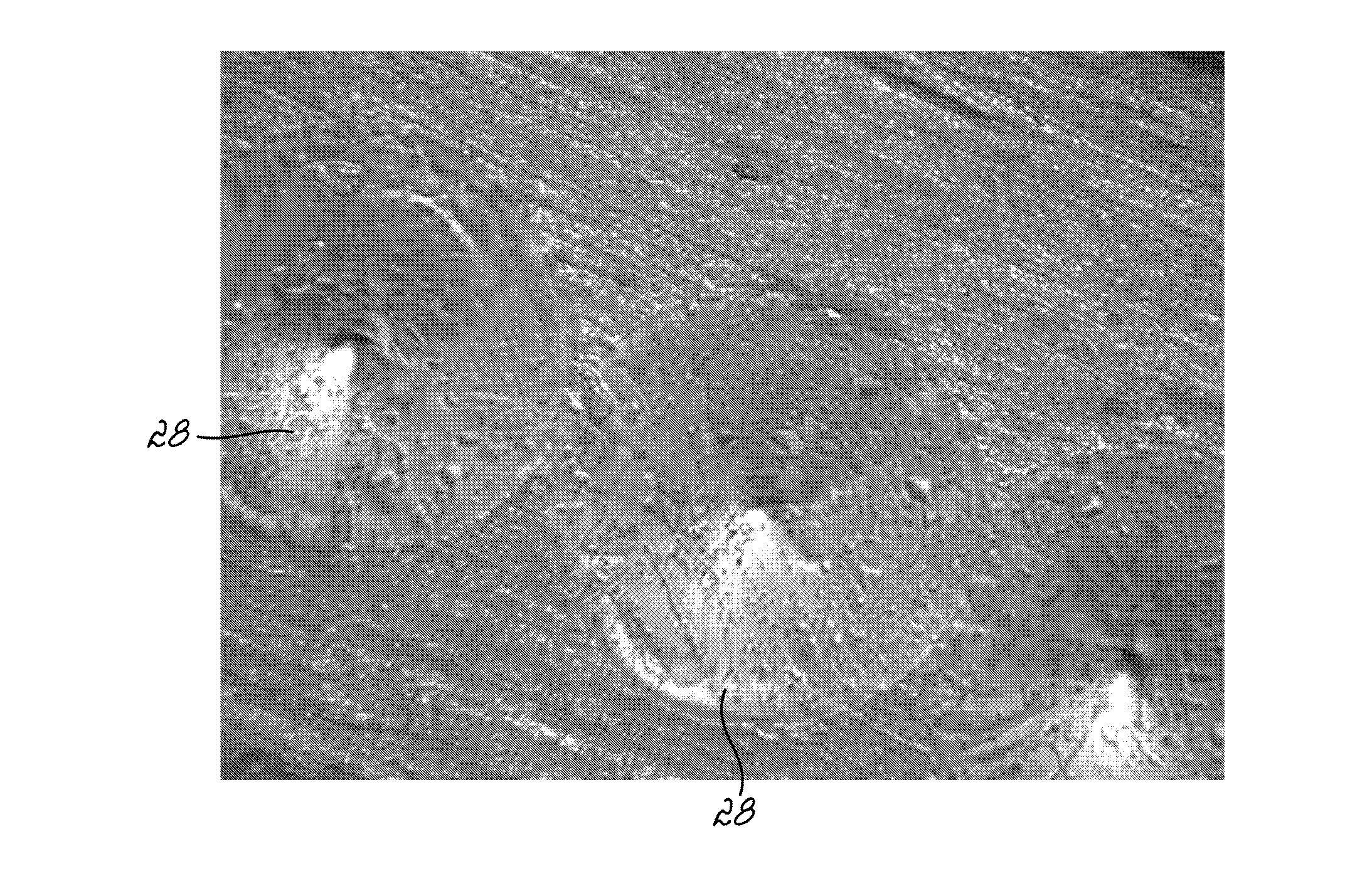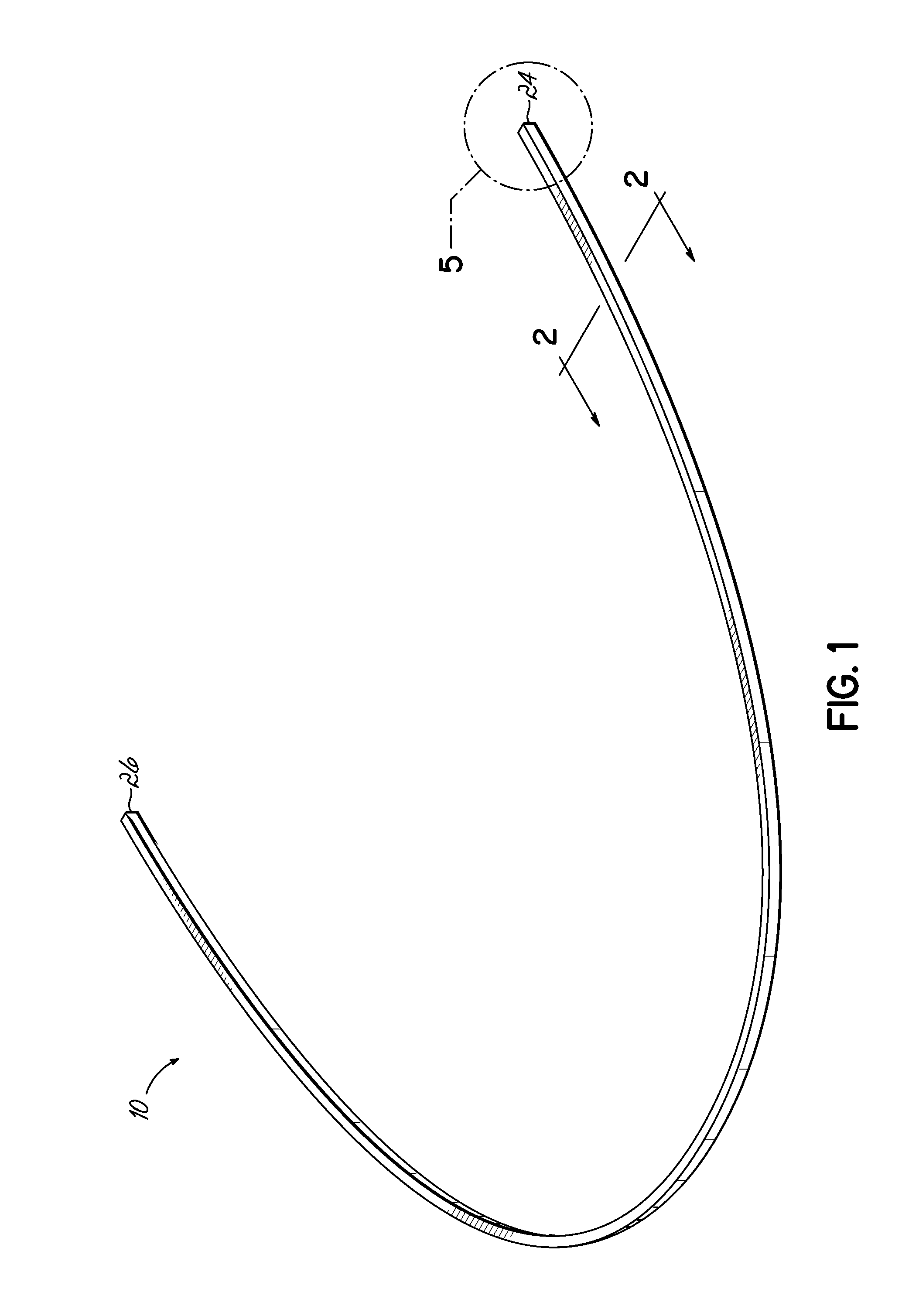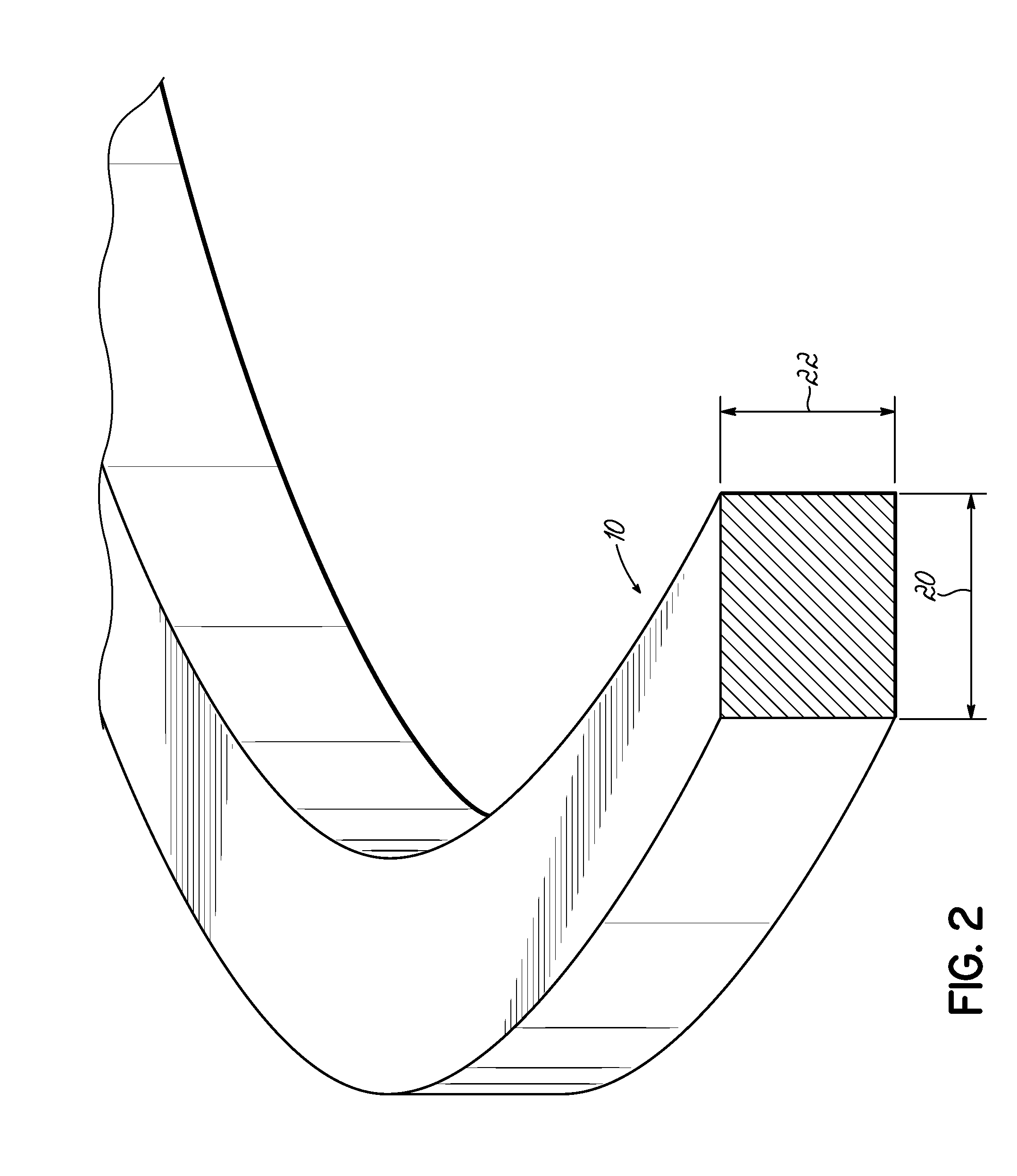Orthodontic appliances and methods of making and using same
a technology of orthodontic appliances and martensite, which is applied in the field of metalic orthodontic appliances, can solve the problems of unpredictably large force of large wires, inability to commence treatment with large cross-sectional archwires, and inability to meet the needs of patients, so as to reduce the temperature of orthodontic appliances and increase the proportion of martensi
- Summary
- Abstract
- Description
- Claims
- Application Information
AI Technical Summary
Benefits of technology
Problems solved by technology
Method used
Image
Examples
example 1
[0120]A round CuNiTi archwire shown in FIG. 6 was treated with a laser for a predetermined number of pulses. The base alloy composition of the CuNiTi archwire was 5 at. % Cu, 44.8 at. % Ni, 49.8 at. % Ti, and 0.2 at. % Cr. The CuNiTi archwire was commercially available from Ormco Corporation and sold under the trademark Damon Copper Ni—Ti®. The archwire was treated with a Fiber Laser with a laser beam spot size of 50 μm operating at a 30% peak power with 0.01 ms dwell time. The archwire shown in FIG. 6 was treated with one pulse of the laser and then the archwire was analyzed with an energy dispersive spectrometer (EDS) at the points indicated in FIG. 6. The EDS information is plotted in FIG. 7. Similarly, the archwire was treated with 3 total pulses, 5 total pulses, and 10 total pulses with each additional corresponding laser treatment being analyzed with the EDS. As shown in FIG. 7, generally between the EDS points 3 and 12, there is a relative increase in the atomic percent titan...
example 2
[0122]With reference now to FIGS. 3 and 8-11, selected zones of a 0.014 inch by 0.025 inch rectangular CuNiTi archwire with the same composition as described in Example 1 were treated with the Fiber Laser. Zone 12 was left untreated. The mechanical data for untreated zone 12 is shown in FIG. 8. As shown, the transformation plateau stress upon unloading (indicated at 30) exceeds about 175 MPa.
[0123]Zones 14, 16, and 18 were individually treated with the Fiber Laser at different peak powers to produce different mechanical properties for each zone. Zone 14 was treated with the Fiber Laser with a laser beam spot size of 50 μm and a schedule of 0.01 ms dwell time at a peak power of 30%. FIG. 9 depicts the mechanical data following treatment of zone 14. As shown, the transformation plateau stress upon unloading (indicated at 32) measures about 150 MPa±20 MPa. Thus, following treatment, zone 14 exhibited a lower transformation plateau stress as compared to the transformation plateau stress...
example 3
[0129]Referring now to FIGS. 14A, 14B, 15A, and 15B, additional CuNiTi archwires of the same composition as in Example 1 were processed according to the process described in Example 2. One set of archwires were rectangular 0.018 inch by 0.025 inch archwires and another set of archwires were round 0.018 inch diameter archwires. Similar to Example 2, the treatment produced similar average plateau stresses of 50 MPa, 100 MPa, and 150 MPa corresponding to the designations “S—50,”“S—100,” and “S—150,” respectively, for the rectangular archwires and “S_Base” for the untreated base archwire material as indicated in the “Rectangular FX” graph of FIGS. 14A and 14B. Similar to Example 2, the treatment produced similar average plateau stresses of 50 MPa, 100 MPa, and 150 MPa corresponding to the designations “R—50,”“R—100,” and “R—150,” respectively, for the round archwires and “R_Base” for the untreated base archwire material as indicated in the “ROUND FX” graph of FIGS. 15A and 15B.
[0130]Eac...
PUM
 Login to View More
Login to View More Abstract
Description
Claims
Application Information
 Login to View More
Login to View More - R&D
- Intellectual Property
- Life Sciences
- Materials
- Tech Scout
- Unparalleled Data Quality
- Higher Quality Content
- 60% Fewer Hallucinations
Browse by: Latest US Patents, China's latest patents, Technical Efficacy Thesaurus, Application Domain, Technology Topic, Popular Technical Reports.
© 2025 PatSnap. All rights reserved.Legal|Privacy policy|Modern Slavery Act Transparency Statement|Sitemap|About US| Contact US: help@patsnap.com



